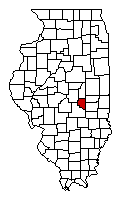|
|

Wish you were here! |

|
|
| I love old postcards,
not only because they open a visual window on a lost world, but also
because they often bear the thoughts, best wishes, and frustrations
sent from one long-gone ancestor to another. This is not just a
collection of pictures; it's an expectant ear, bent in anticipation of
the gossip of long-silent voices. Warning: most of the genealogical notes here are based on census records, augmented by other unauthenticated sources. I believe that what I've written is correct, but there are no guarantees. |
| You may want to read some introductory notes about postcard history that may be helpful when reading the postcard descriptions. |
| A plea: I welcome your contributions to this section, whether they are additional bits of information about any of the cards here, or images of your own cards. I'm happy to receive images of any sort, but if you can scan them at 200%, front and back, it maximizes the visibility of the detail and matches the format of the others. |
|
| A word about post card history: Private postcards are a mode of communication that does not, in this country, preceed the twentieth century. When reviewing these cards, it it helpful to remember that:
After this date, there were no more statuary limititions that defined postcards' layouts, but there are some stylistic characteristics that can help date cards that bear no postmark:
|